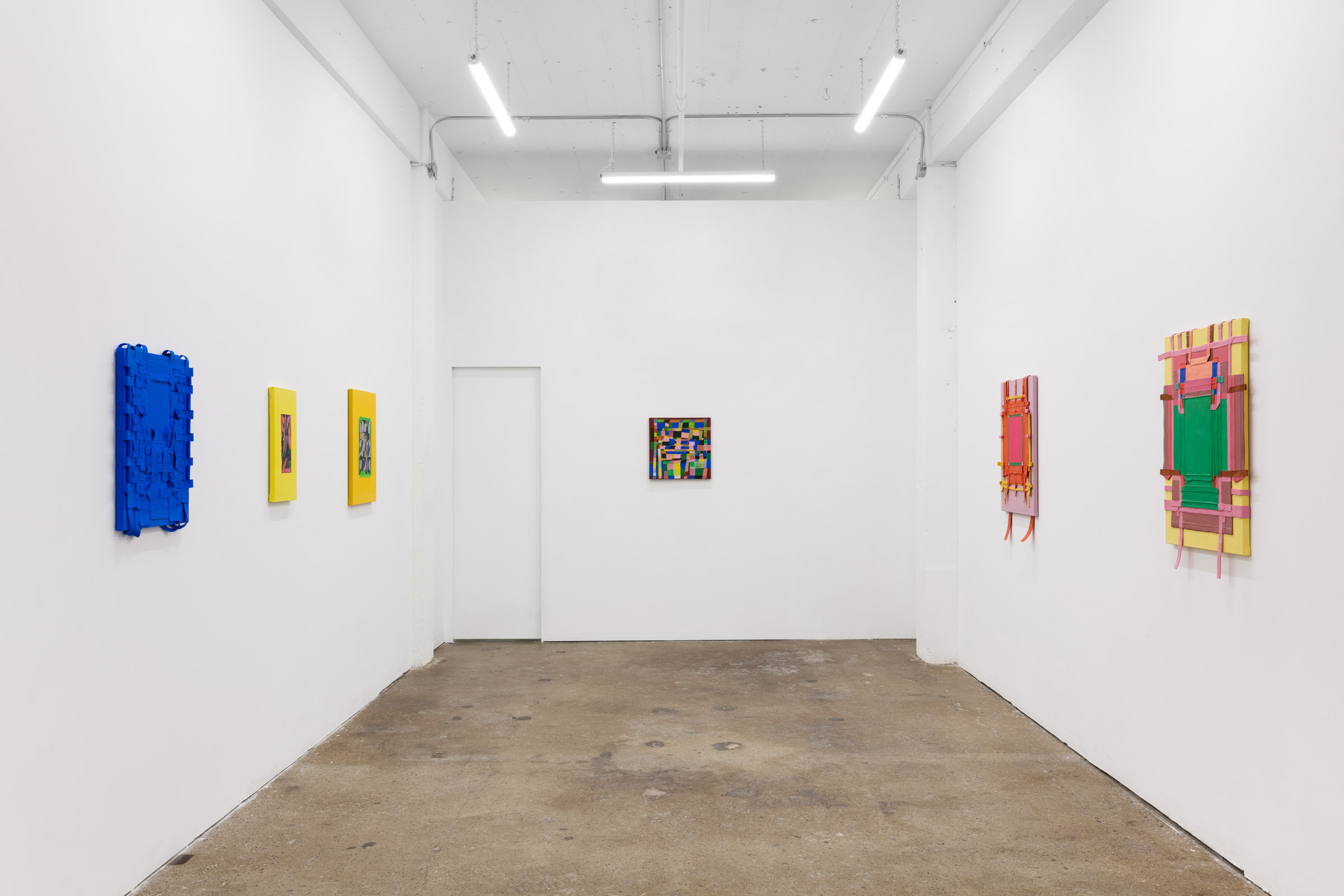




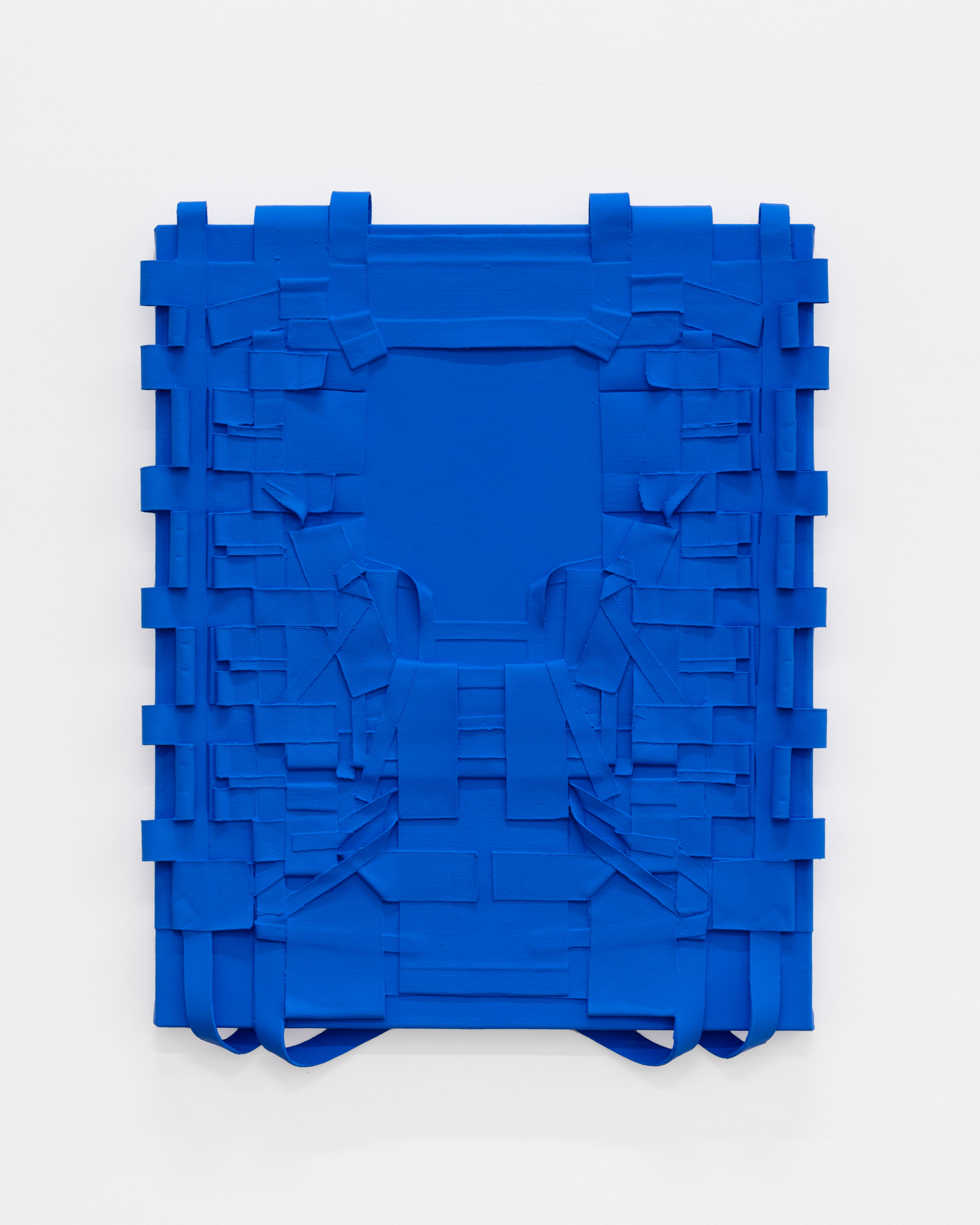

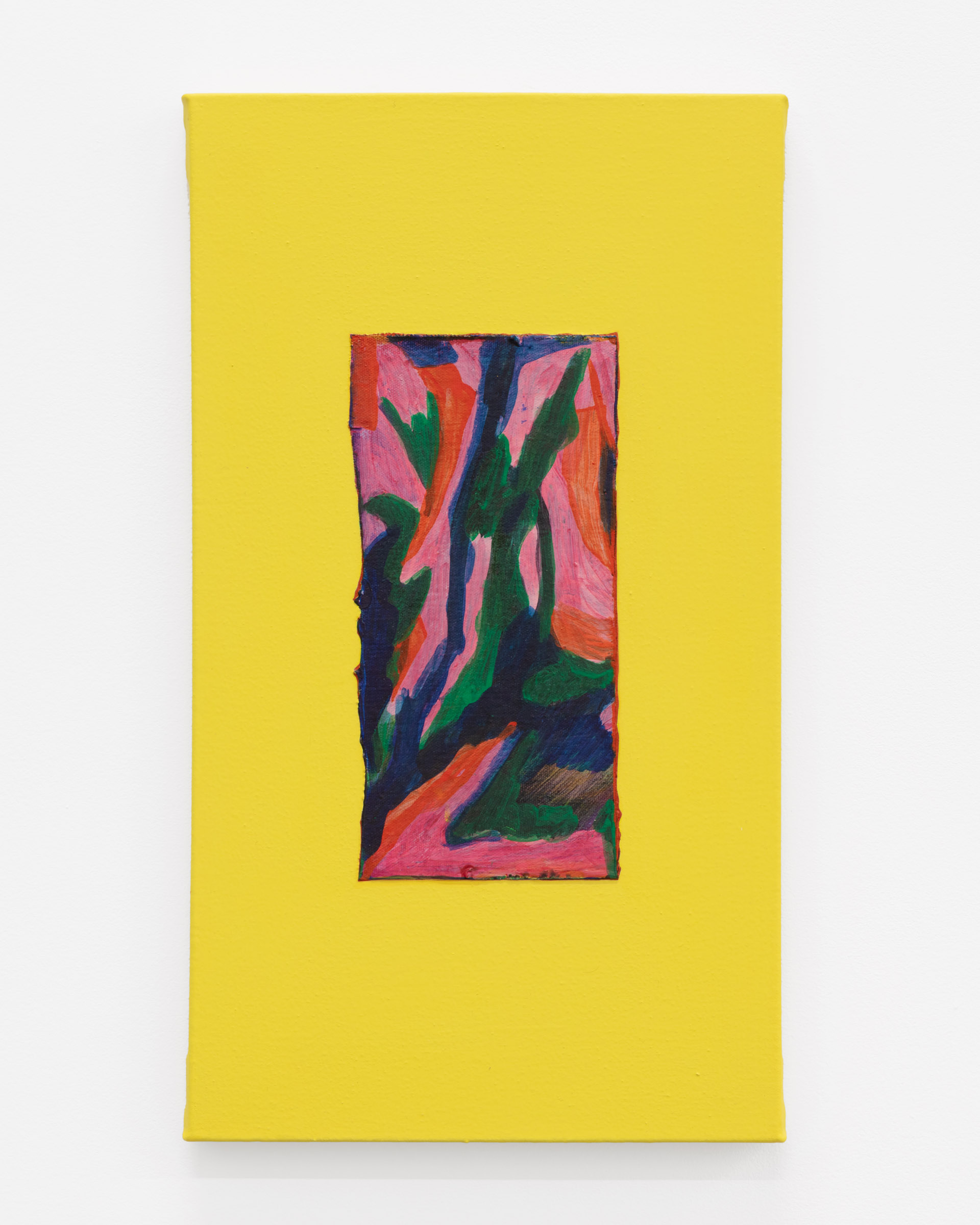
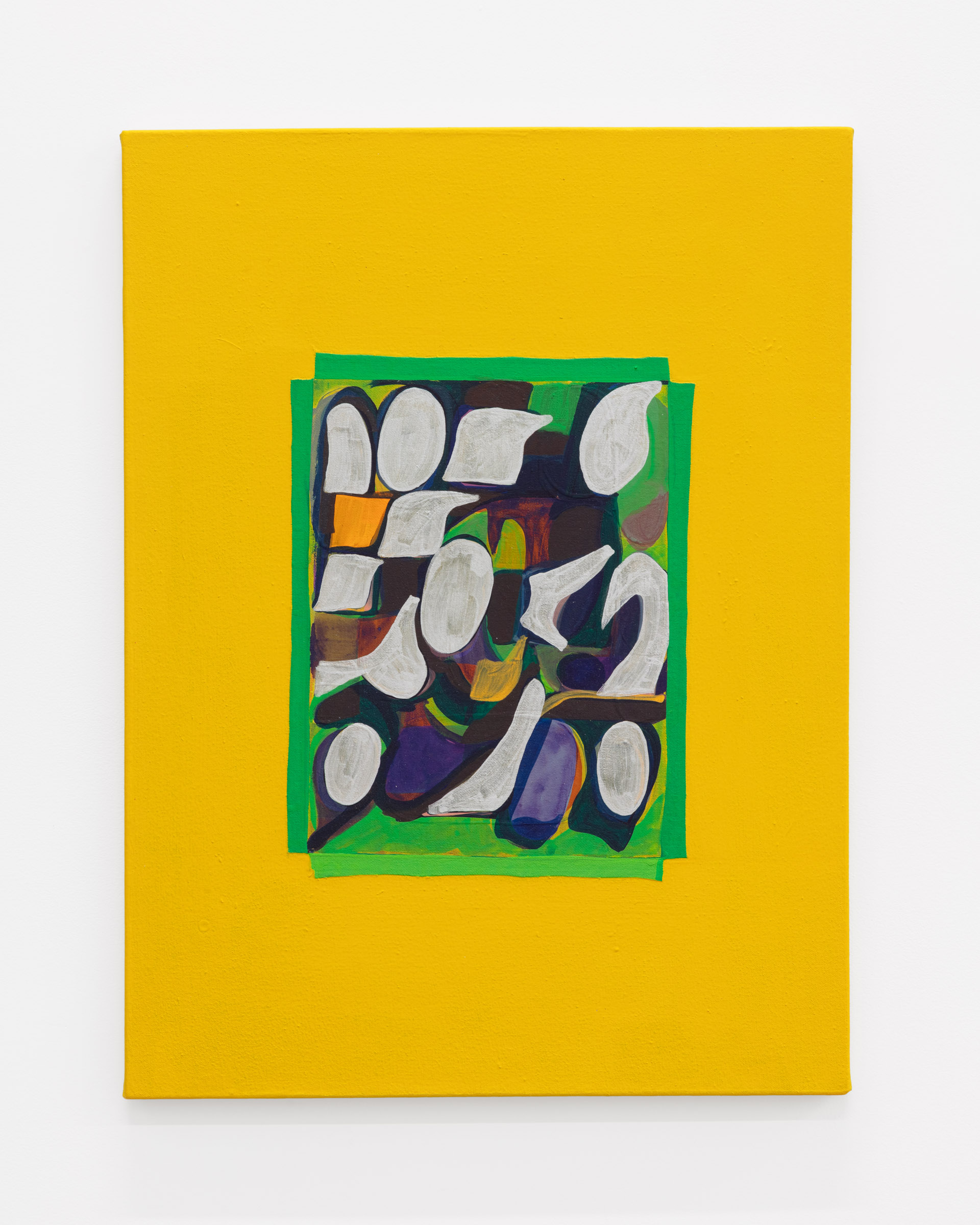
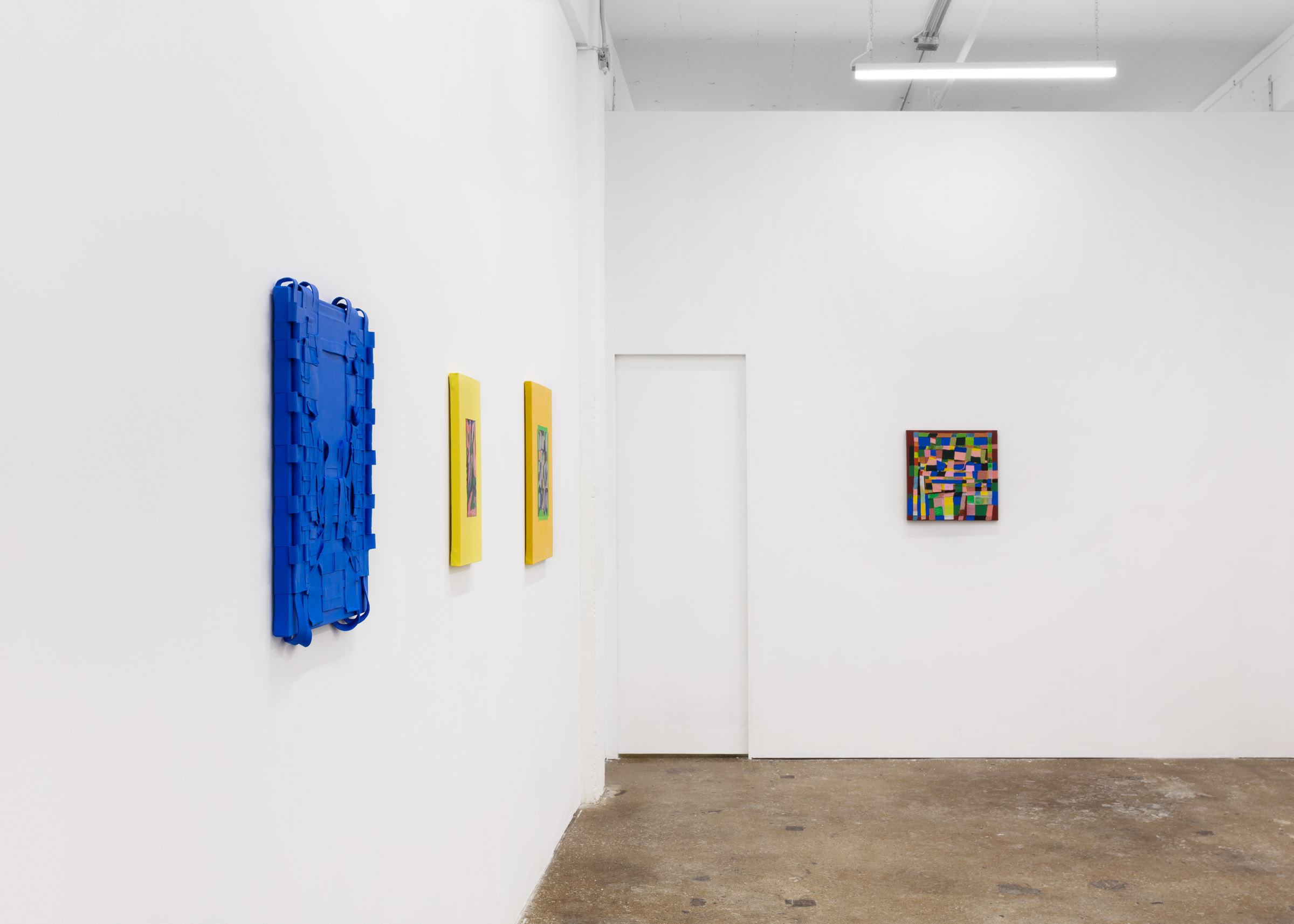
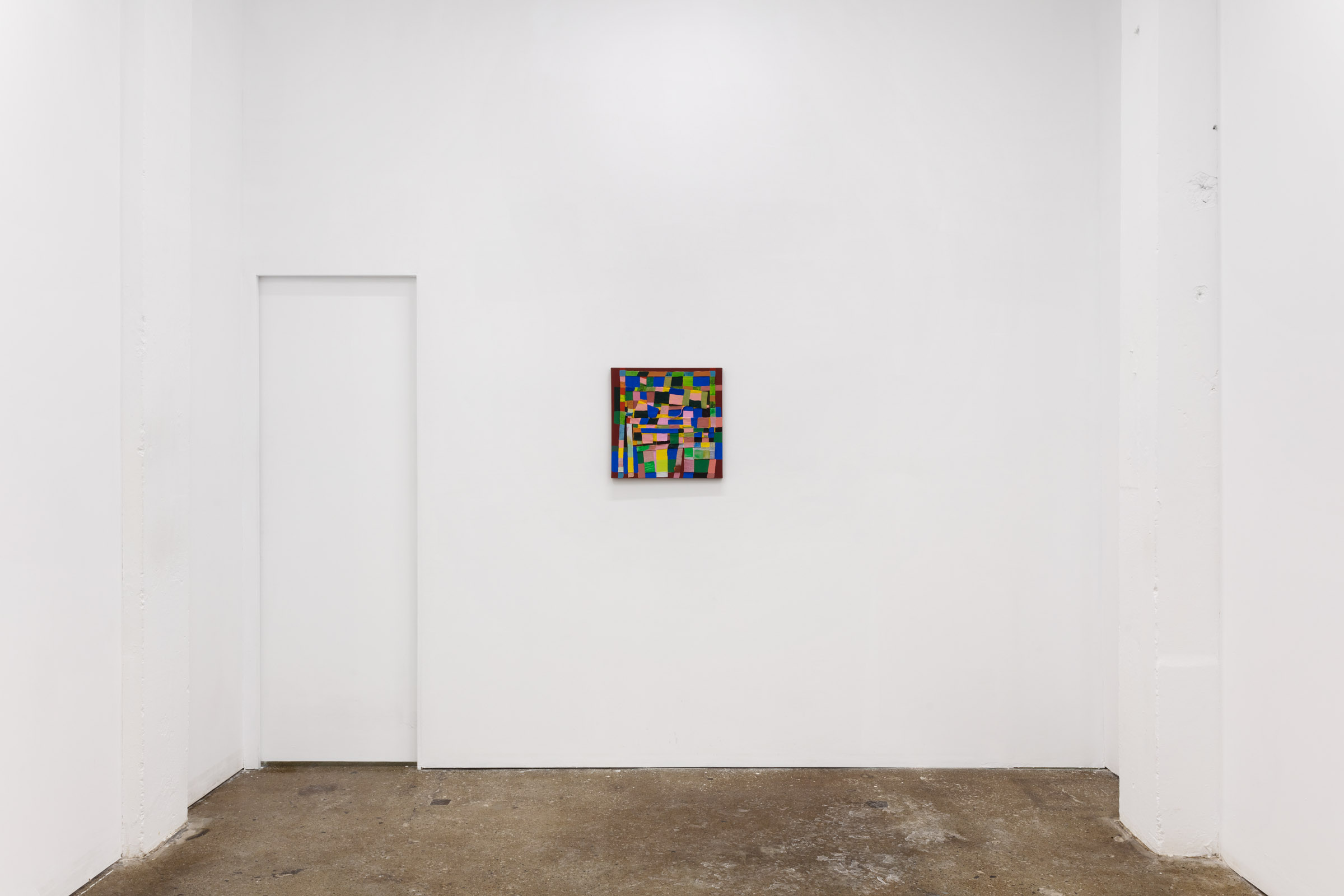
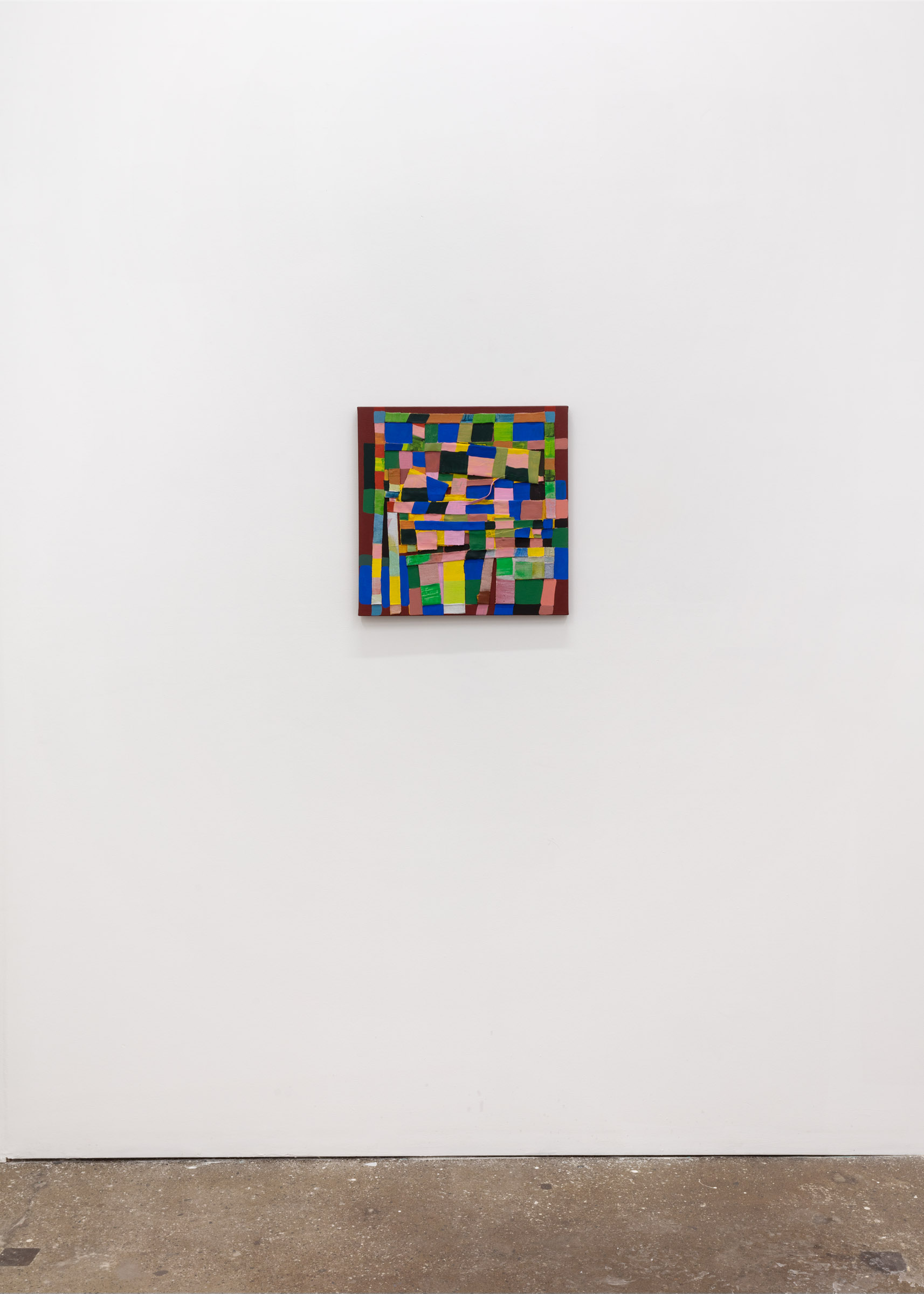
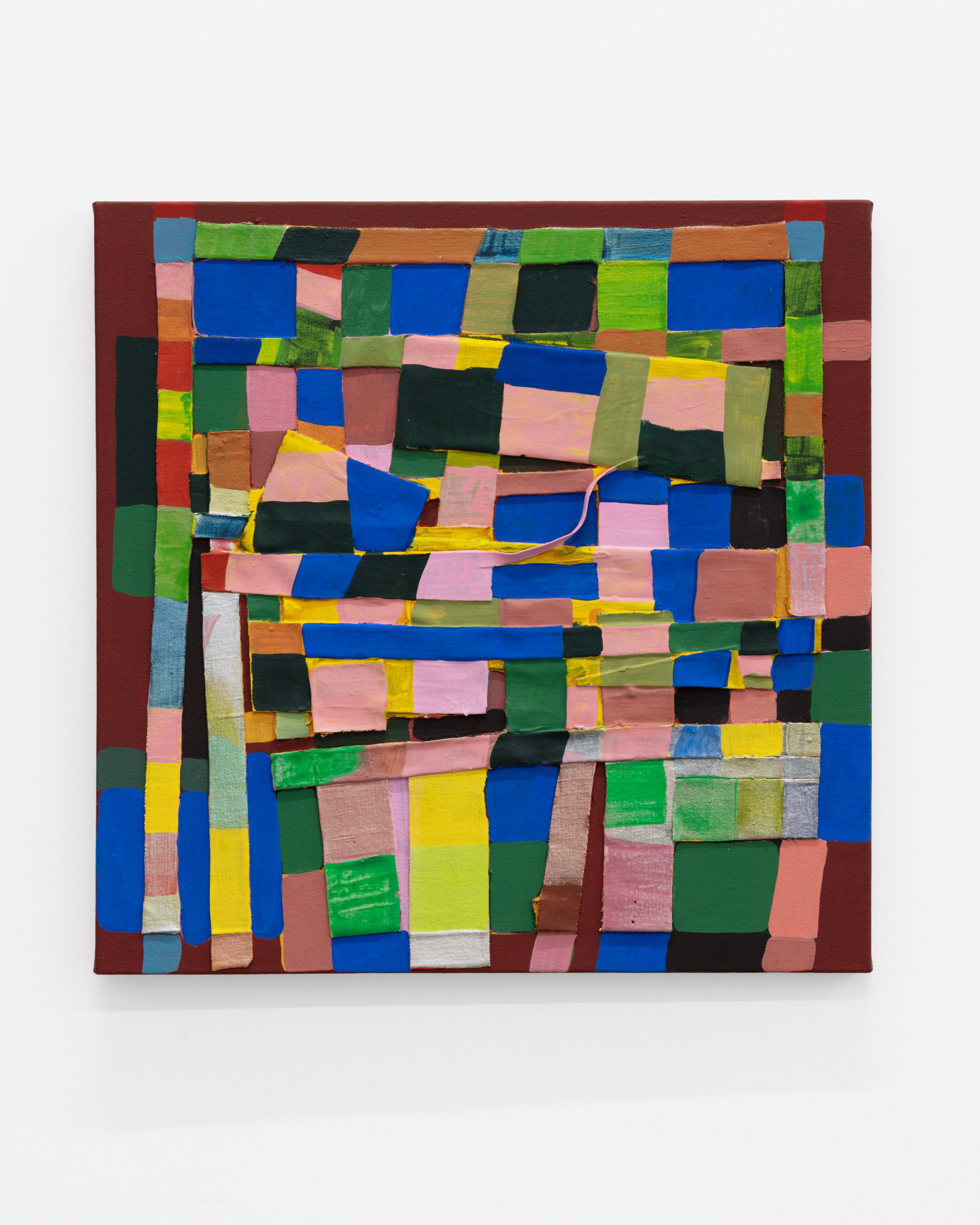

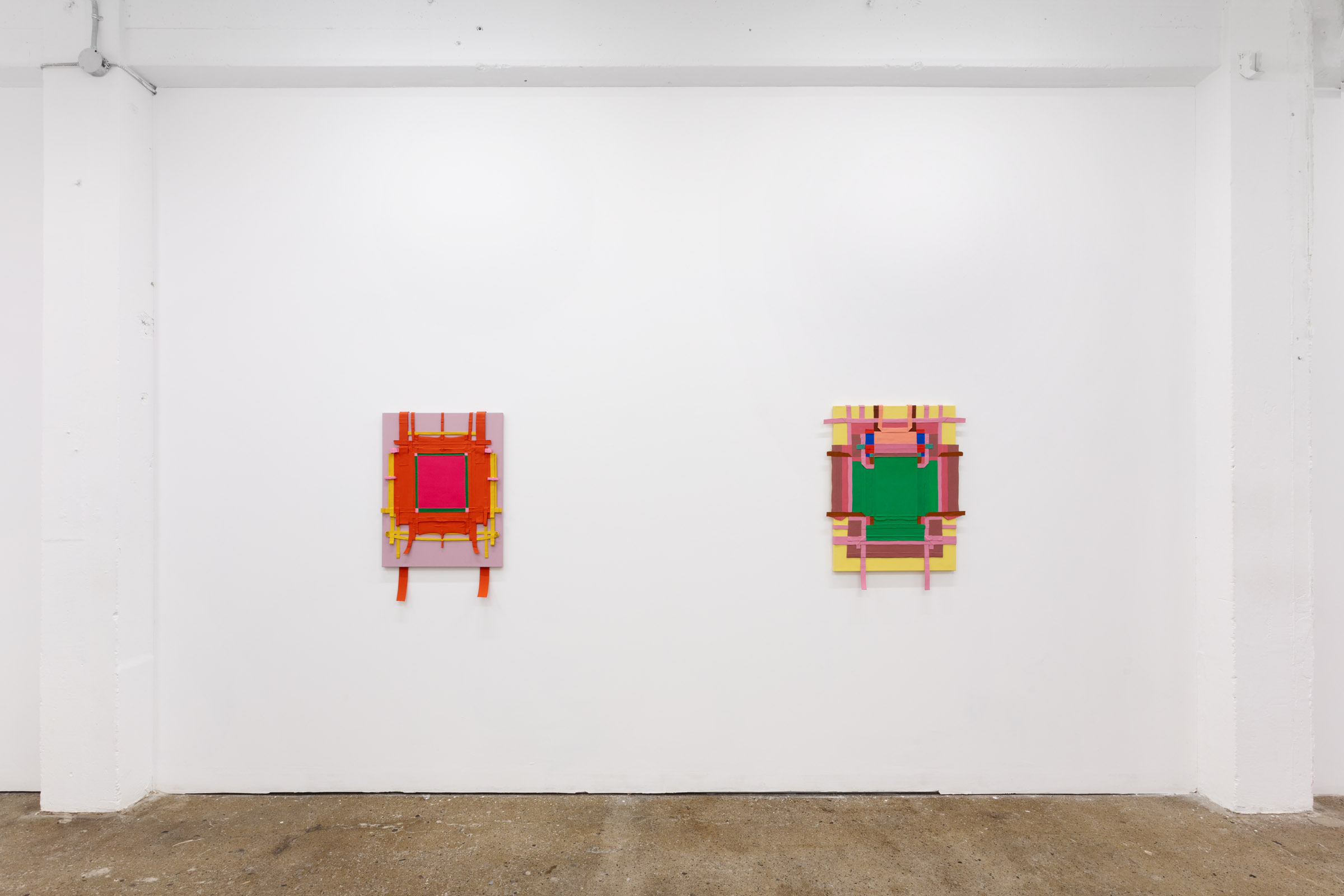
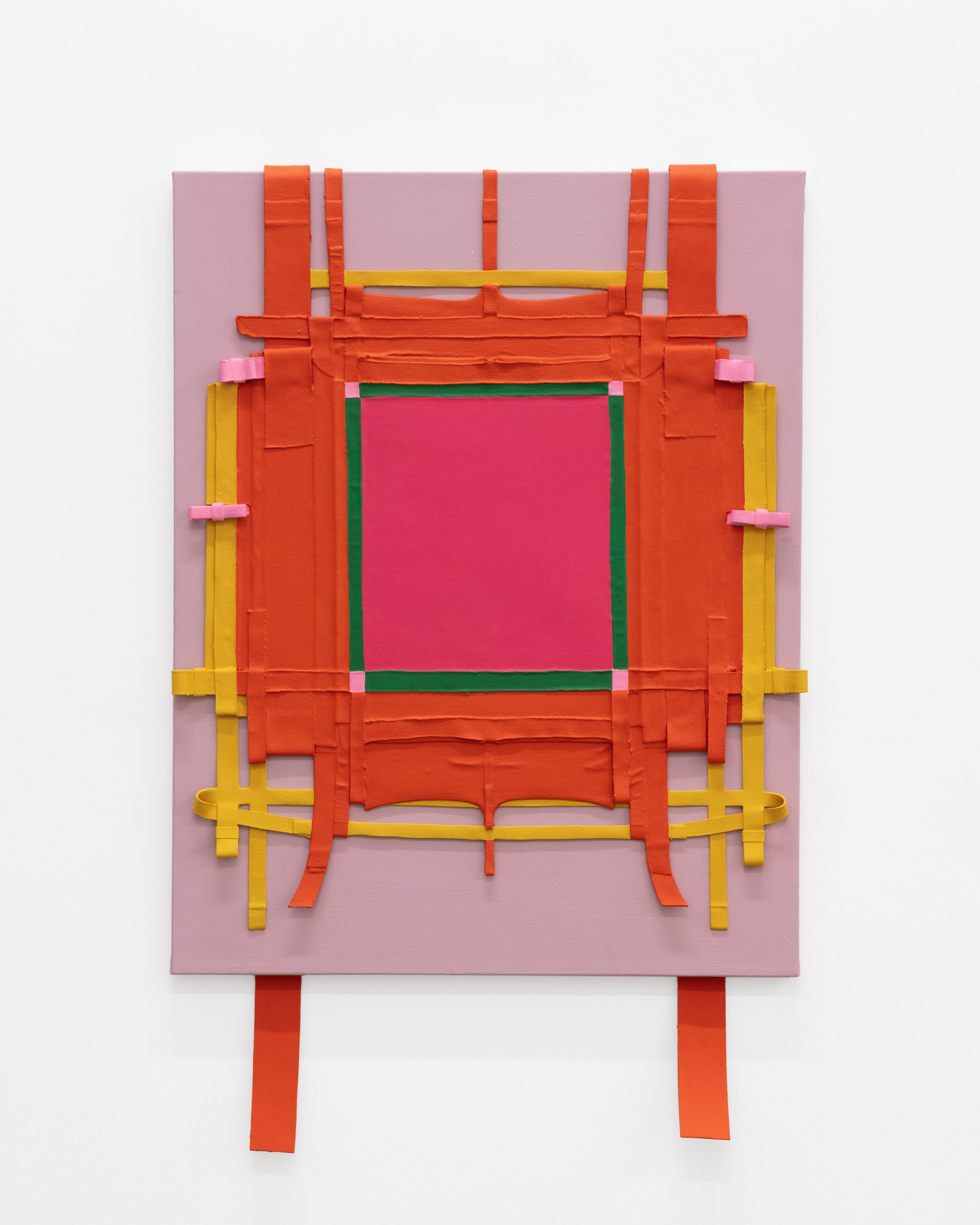
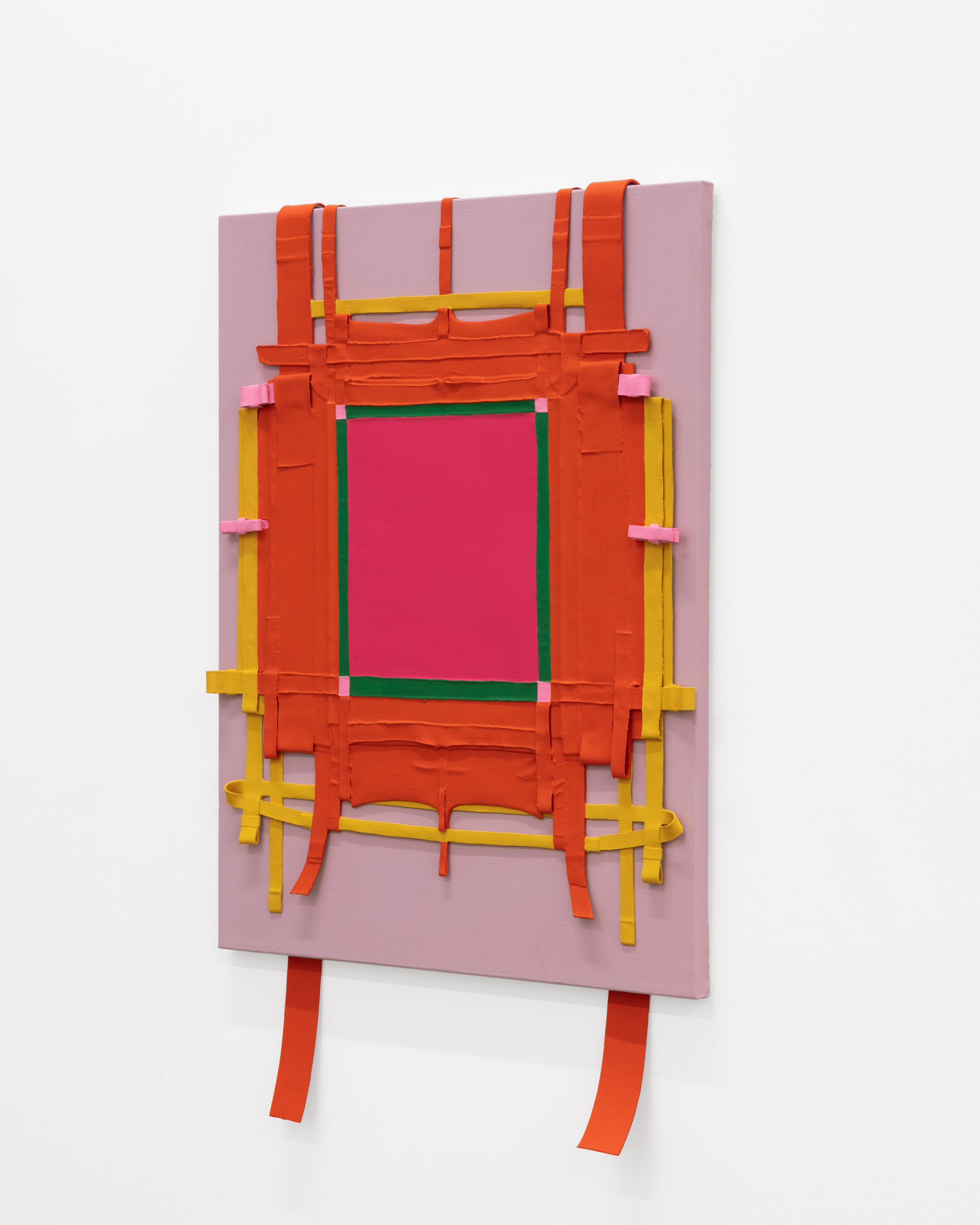
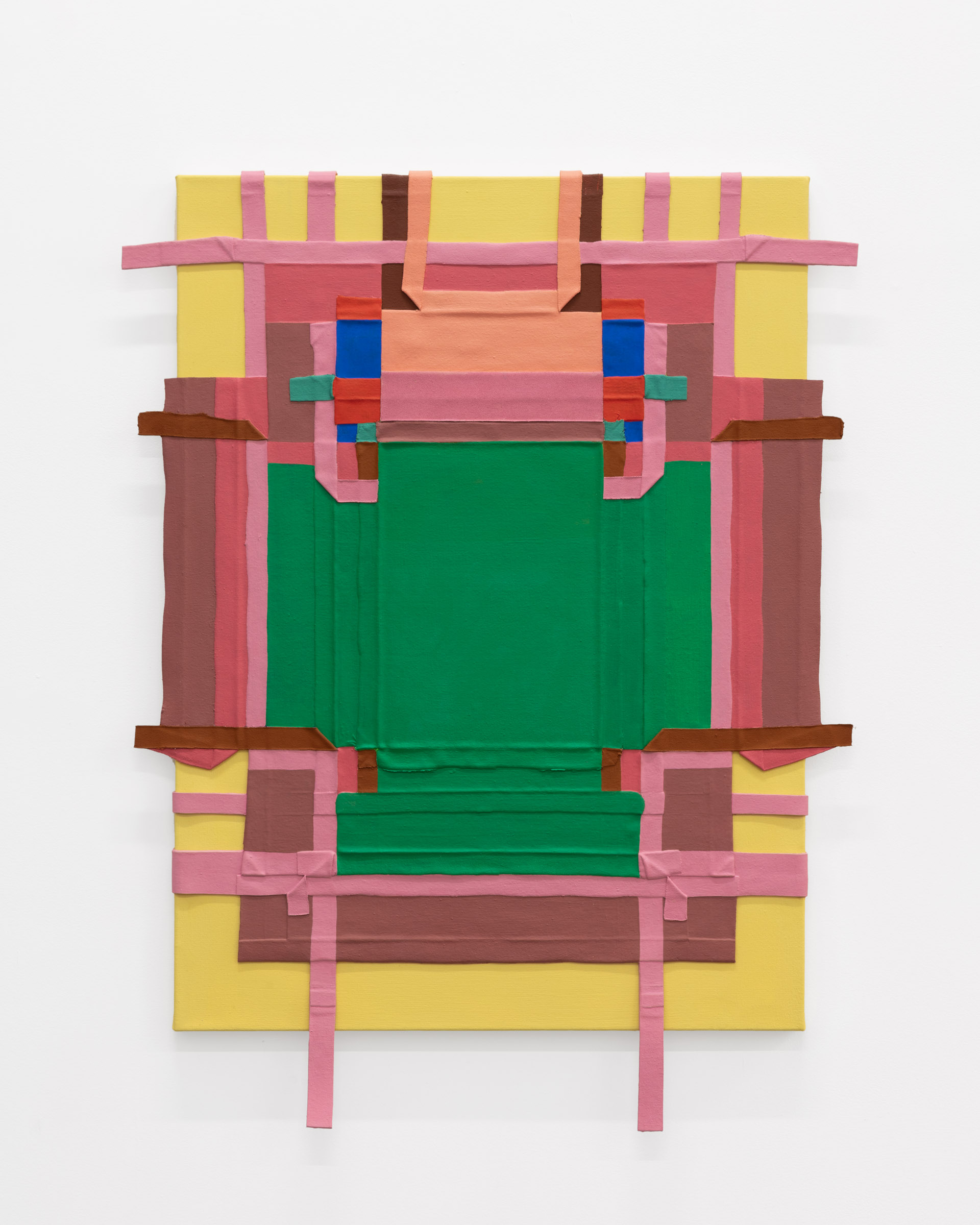
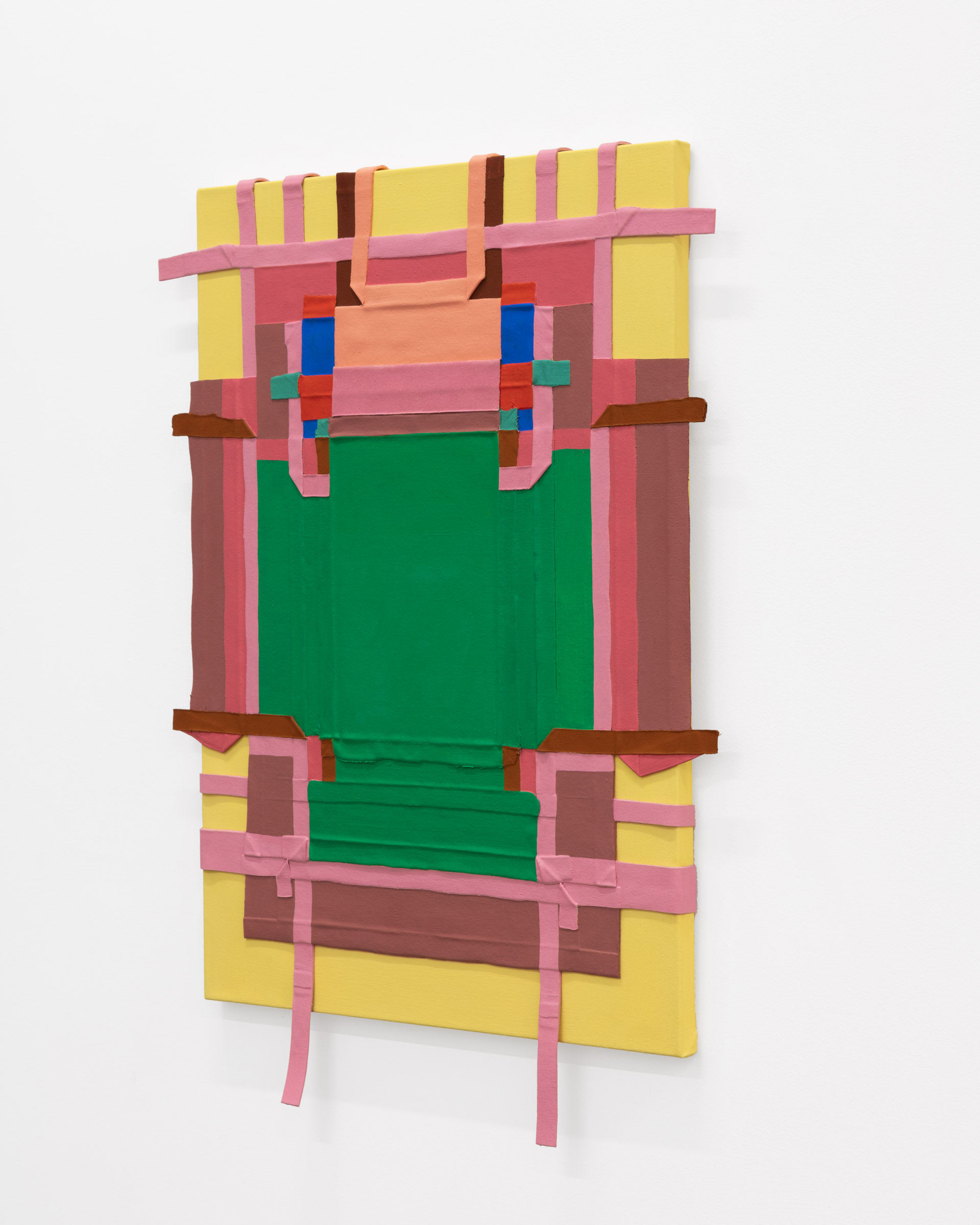
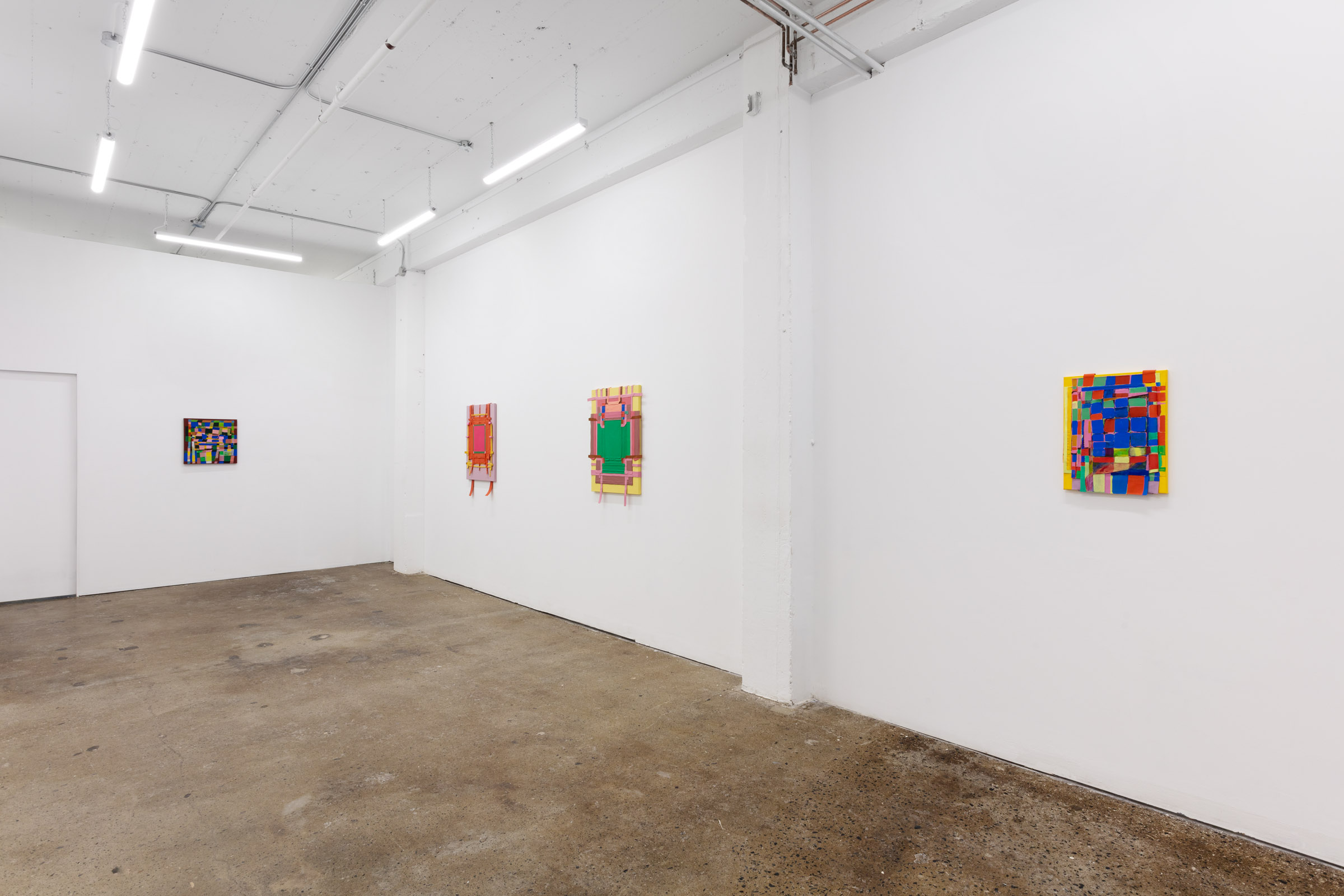

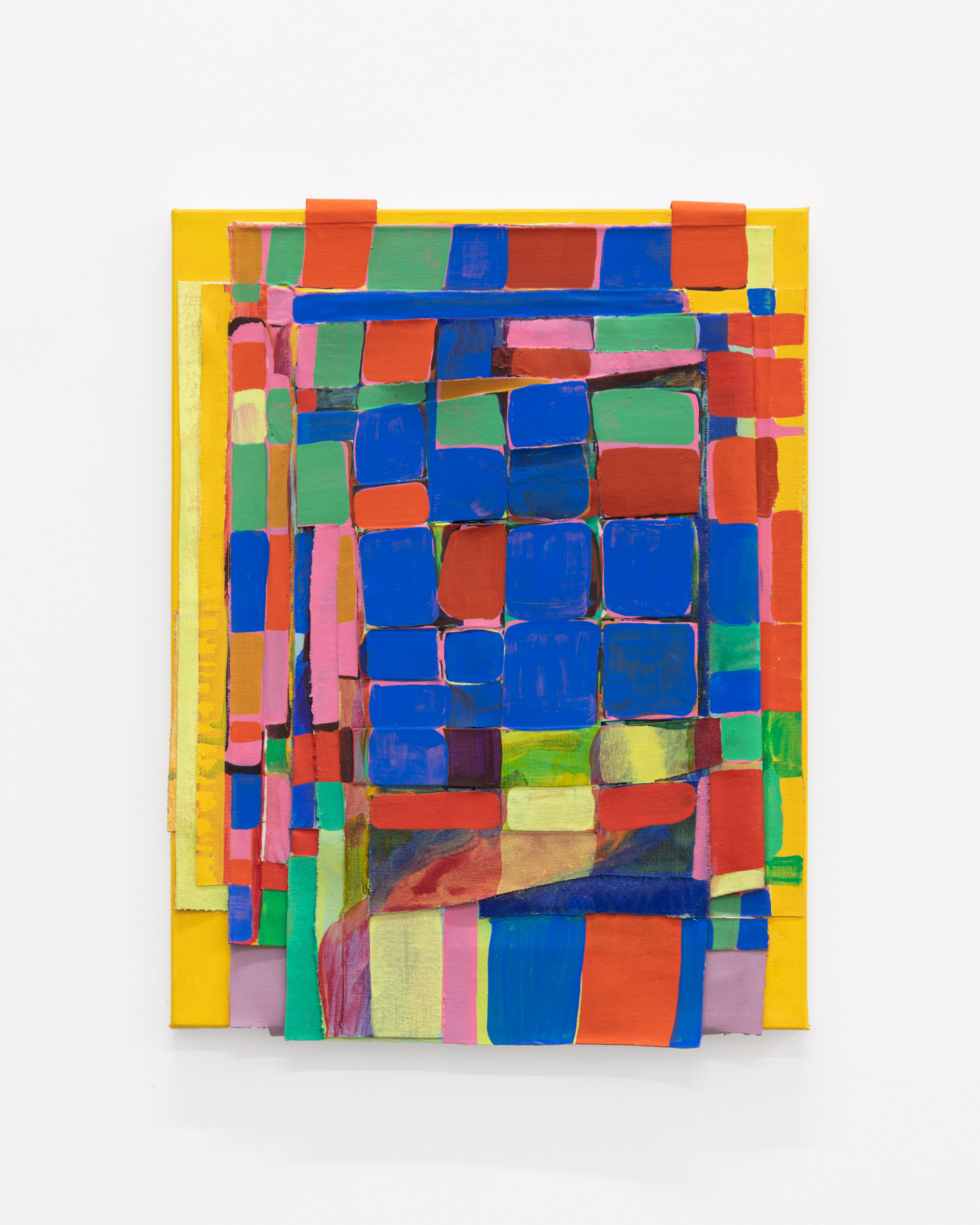

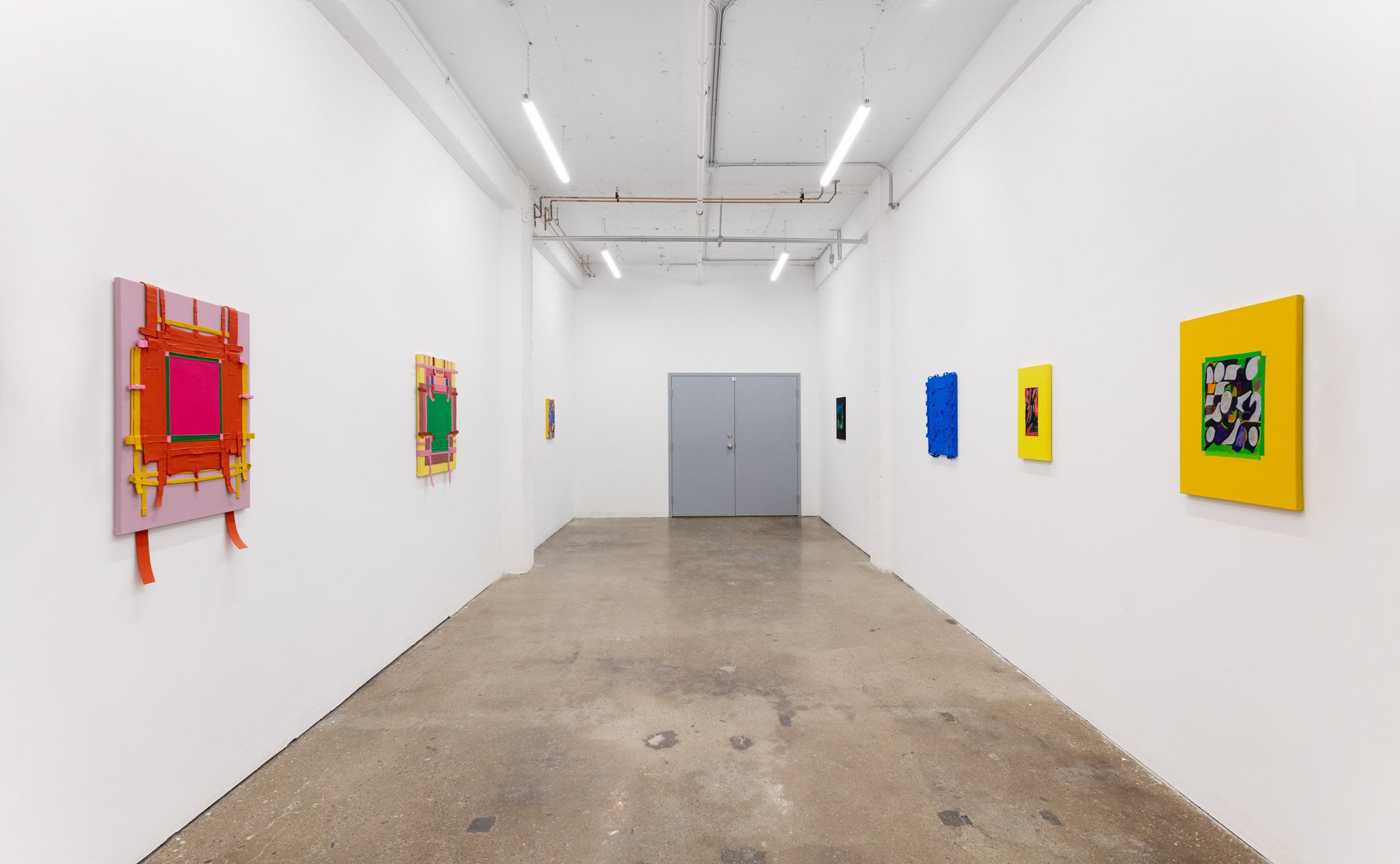
If you gazed behind the fretwork of spaghetti westerns, you wouldn’t have guessed, Pablo, that the poem is, too, metropolitan anxiety at work. - Zhou Sivan, Zero Copula
The Extended Aperture
It all boils down to language.
What is happening in Annabeth Marks’ paintings?
It all boils down to language.
Can poetry affix a meaning to a web of canvas? I know of no other adequate substitute. What say a window, a painting inside a window, a view scope, an extension out into the realm of the person—when does a painting start looking outwards rather than inwards?
Questions arise around the work of Marks, but again it all boils down to language.
What language is she using? The girded and gridded language of Modernism? Too overworked. The language of textiles and weaving? Hinges too close to craft. I’d say the language used is more of a provoke on the creation of paintings. It’s a web that runs between both modernism and craft, because who is to say they don’t lean on each other more than they already do.
The symmetrically-designed canvas work of Marks is weaved and layered, over and under, folded and trimmed to become something more than just precious and remote, but an active agent that is working to figure itself out. The paintings are attempting to figure themselves out. They place openings, windows, for more paintings to appear—letting the viewer peer in—but others build themselves upwards and outwards to also affix an aperture to the outside, to you, the visitor.
There is a language of photography going on, with apertures and canvas work—similar to camera work—that let the painting stage itself. The paintings could appear as mise en abyme, but if there is an abyss here, then it is one towards painting and is a ground of solitude and remembrance. The paintings placed in the windows are key codes and lockets, able to rework and reconfigure the window and painting they are placed in at any moment they might wish to do so. We’re speaking of paintings as agents of their own making now, because that’s what is occurring in Marks’ paintings.
Paintings becoming paintings, looking into the history of painting, looking outwards into the possible future that you—the viewer—may be a part of in the progress of painting. How are you looking at them? Do they appear to be reworking themselves in front of you?
There is an intense movement in and amongst the works, and this movement aims towards reconfiguration. There is too much modularity in the paintings to say otherwise. Movement arises and it aims towards reconfiguring the painting in front of you. Between each mullion there is space, and this space allows for Marks to either layer and balance another stretch of canvas through the previous threads, or this space allows for another painting to occur. This painting may appear in either the hand of Marks or it may appear in the interstice as the work refigures itself.
Reconfiguration then seems like the natural path of the painting. Marks shows this by either painting into the void or by placing another layer to refill and rebuild space. The paintings that she uses to go back into the canvas, instead of extending further out from it, reference these voidal and ovaline abstractions. Even in their size, they speak to an all-over rule of Modernist, abstract painting. As Marks shows, in fact, it was never necessary to paint all over the canvas to prove this concept of all over painting, as the canvas itself has become the painting all over.
In Mark’s paintings I find this renewed joy of abstract painting, and they’re ability to convey that a new path forward was and is still possible all along. Even while the stretches and zones of canvas remain taught, there is a comfort and ease in their making and presence. Threading and pulling through, dog-earring and twisting, there is no necessity for forcefulness as the painting guides itself along. In this grid, anxiety is lessened.
- Alan Longino, 2022
Annabeth Marks is an artist based in New York City. She received her MFA in painting from the Milton Avery Graduate School of the Arts at Bard College and her BFA from Rhode Island School of Design. Most recently Mark’s work has been the subject of an institutional solo exhibition at the John Michael Kohler Arts Center. Recent solo exhibitions include presentations at Fahrenheit Madrid Gallery, Spain, Artist Curated Projects, LA and White Columns, NY. Notable group exhibitions include shows at Canada Gallery, NY; Franz Kaka, Toronto; Derek Eller Gallery in NY; and Overduin and Co., LA, among others. Her work has been included in institutional group exhibitions at the Whitney Museum of American Art, NY; and MoMa PS1, Long Island City, and the Rhode Island School of Design Museum, RI.
